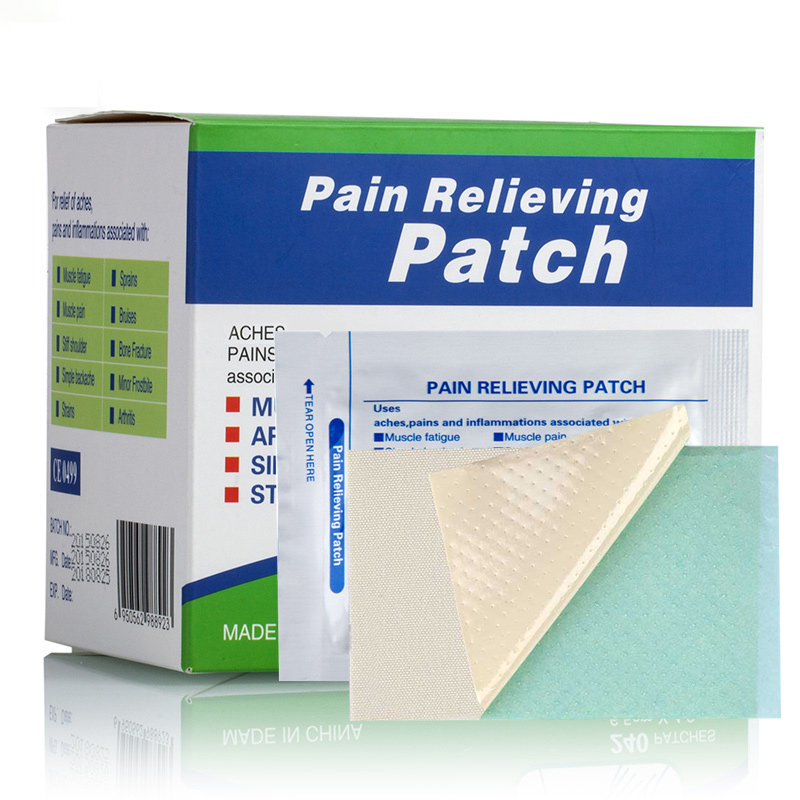Pain Relief Patches
What are pain relief patches?
Pain relief patches, also known as topical analgesic patches, are medicated adhesive patches that are applied directly to the skin. They contain active ingredients like lidocaine, menthol, capsaicin, diclofenac, salicylates, or NSAIDs that penetrate the skin to relieve temporary pain. The ingredients work by blocking pain signals or altering pain perception.
How do pain relief patches work?
Pain relief patches work by delivering the active pain-relieving medication through the skin and into the bloodstream. The medication soaks through the skin and is absorbed into the underlying tissues and nerves. This allows the ingredients to block pain signals and reduce inflammation and swelling at the localized site of pain. The effects typically begin within 30 minutes and can last for up to 8 hours.
What are the benefits of using pain relief patches?
Some benefits of pain relief patches include:
- Targeted pain relief - Patches can be applied directly to the source of pain.
- Easy to use - Peel and stick on. No need to swallow pills.
- Avoid stomach irritation - The ingredients bypass the digestive system.
- Extended relief - Patches provide longer-lasting effects compared to oral painkillers.
- Fewer systemic side effects - More medication goes to the painful area rather than circulating throughout the body.
What types of pain can patches treat?
Pain relief patches may be used to treat various types of acute and chronic pain such as:
- Back pain - Patches can provide localized relief for low back strain, herniated discs, sciatica, and other back issues. Menthol patches offer a cooling sensation.
- Arthritis pain - Patches containing diclofenac or salicylates can reduce inflammation that contributes to arthritis pain in joints. Capsaicin patches can help osteoarthritis.
- Joint pain - Whether it's knee, wrist, elbow, or shoulder pain, anti-inflammatory patches can ease swelling and soreness from joint injuries or conditions like bursitis.
- Muscle pain or strains - Sore, tense, or cramping muscles from overuse or injuries can benefit from cooling, numbing patches containing menthol or lidocaine.
- Tendonitis - Relieve inflamed tendons with diclofenac or salicylate patches designed for placement near affected areas like the elbow or shoulder.
- Bursitis - Patches can reduce painful swelling from inflamed bursae around joints like the hips, knees, and elbows.
- Nerve pain - Lidocaine patches can provide relief for nerve compression or damage-causing conditions like sciatica, shingles, and neuropathy.
- Migraine headaches - Some contain menthol to provide cooling relief for migraine pain in the temples and back of the neck.
- Menstrual cramps - Applying patches to the abdomen can help ease cramping and discomfort during periods.
- Sports injuries - Strains, sprains, and muscle soreness from athletic activity can be treated with patches.
Always check the label for the conditions the patch is approved to treat.
How long does it take for pain relief patches to work?
Most pain-relieving patches will begin to take effect within 30 minutes after application. Maximum pain relief is typically experienced within 1-2 hours. The pain relief effects will last between 4-8 hours before gradually wearing off. If pain persists, a new patch can be applied as directed.
What types of pain relief patches are available?
There are a variety of patch types based on the active ingredient formula:
- Lidocaine patches - Best for nerve pain.
- Capsaicin patches - Used for arthritis, joint, and muscle aches.
- Menthol/camphor patches - Provide cooling relief for back pain, strains, and sprains.
- Diclofenac patches - Prescription NSAID patches to treat inflammation.
- Salicylate patches - Contain methyl salicylate for muscle and joint pain.
- Combination patches - Mix ingredients like menthol and lidocaine.
Who can benefit from using pain relief patches?
Pain relief patches can be used by a wide range of individuals including:
- Adults of any age - Great for seniors who have age-related aches and pains.
- Athletes - Can help treat sports injuries.
- People with chronic pain - Ongoing back pain, arthritis, fibromyalgia.
- Post-surgical patients - Effective for incision pain management.
- Those unable to swallow pills - Patches allow for easy topical delivery.
Always check if the patch is safe for your age before applying. Consult a doctor first if pregnant, breastfeeding, or taking any medications.
Hopefully, this guide provides helpful information on how pain relief patches work and how you can use them to manage your pain. Always read the packaging carefully and follow dosage recommendations for the safest results. Check with your doctor if you have any other questions.















